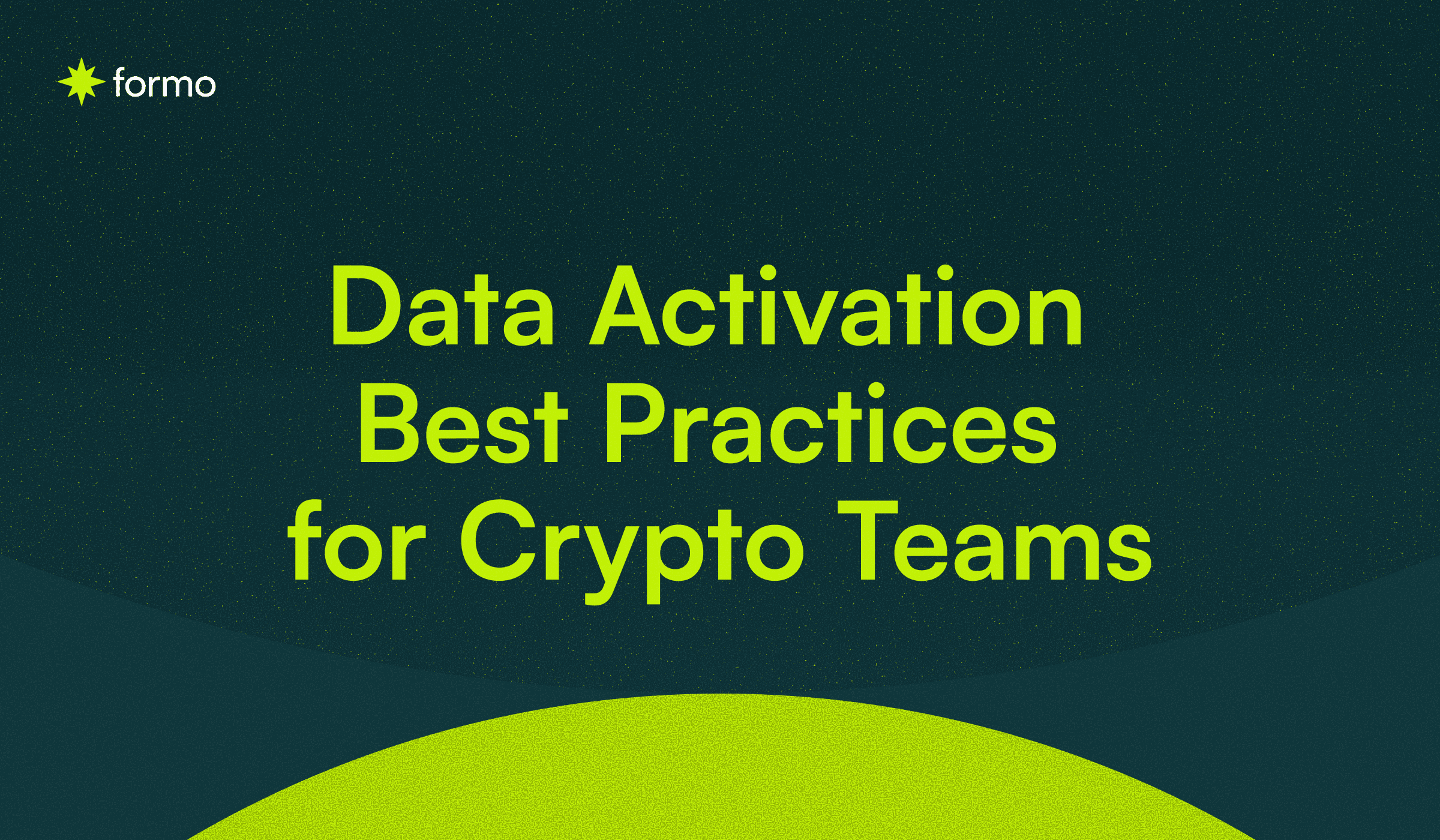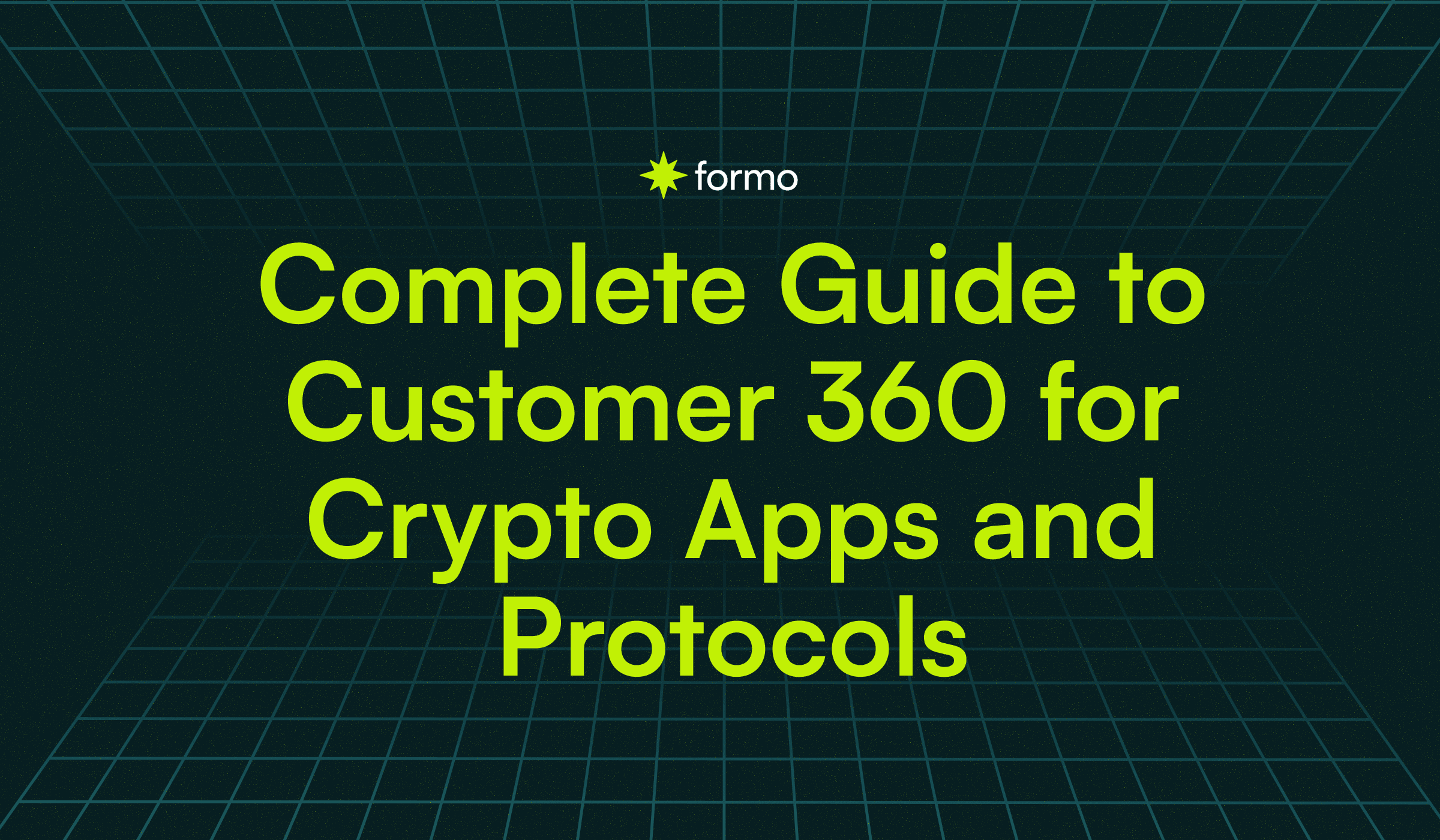In Web3, getting users to complete a survey isn't just about asking the right questions—it’s about creating the right experience. Traditional survey incentives like discounts or gift cards don’t resonate with onchainusers who value ownership, status, and onchain verifiability.
NFT rewards offer a powerful, crypto-native way to increase survey participation, enhance user loyalty, and collect actionable onchain data.
In this guide, you’ll learn:
Why NFT rewards matter for survey engagement
The benefits of using NFTs in research and marketing
Step-by-step instructions for launching NFT-rewarded surveys
The top tools for minting and distributing NFTs
Let’s dive in.
Key Takeaways
NFT rewards boost survey participation by offering exclusive, verifiable digital collectibles.
NFT rewards enhance user experience with collectible, status-driven, or utility-based value.
Tools like Formo enable crypto-native survey experiences, with build-in wallet verification and token gating features.
Communities grow around NFT collections, deepening user engagement and building brand loyalty.
Platforms like Zora, POAP, Thirdweb, and Highlight make it easy to create and distribute NFTs to your users.

Web3 surveys help Web3 teams enhance user engagement by integrating NFT rewards
What Are NFT Rewards in Web3 Surveys?
NFT rewards are unique digital collectibles—such as PFPs, art, or access tokens. Unlike traditional rewards, NFTs are verifiable onchain, scarce, and often collectible.NFTs are a crypto-native alternative to standard digital discount codes and incentives.

Non-fungible tokens (NFTs) serve as unique digital assets that users can earn by completing surveys
For example:
A POAP (Proof of Attendance Protocol) NFT might reward users for participating in a product feedback survey.
A membership token could grant access to an exclusive Telegram group.
A limited-edition digital collectible might represent appreciation or early adopter status.
NFTs create memorable user experiences that foster long-term connections with your brand.
Why NFT Rewards Improve Survey Engagement
Building meaningful user loyalty requires strategies that resonate with their needs and values. Traditional loyalty programs often fail to engage users effectively, but NFTs present a unique solution to increase community engagement.
Onchain users are more likely to engage when the reward is:
Exclusive: Limited-edition NFTs drive FOMO and urgency.
Onchain: Proof of participation can become a badge of honor.
Functional: Some NFTs unlock access, perks, or future experiences.
By rewarding participants with NFTs, you can:
Increase response rates and survey completion
Improve data quality through more thoughtful answers
Build community and loyalty over time
Reduce churn by keeping users connected to your ecosystem
The excitement of receiving an NFT often leads users to share their reward on social media, creating organic buzz around your survey.
Advantages of Using NFT Rewards in Surveys
1. Drive Community Engagement
NFTs serve as digital proof of attendance, identity, or achievement. When users earn them by completing Web3 user surveys, it creates a sense of identity and belonging. This drives stronger participation and retention.
By offering these unique digital assets, brands can drive higher community engagement levels and foster deeper user relationships.
2. Create Rare, Collectible Digital Assets
Offering limited-edition NFTs transforms basic surveys into events your community can look forward to. Superfans love collectibles, and brands can benefit from the hype and exclusivity these rewards bring.
NFT rewards add a real-world value component, as recipients may benefit financially from holding or selling these assets.

The excitement of earning an NFT can motivate users to provide more thoughtful responses
3. Deliver Long-Term Utility
NFTs can be designed to unlock other perks and rewards in your community:
VIP access to your next event
Beta access to upcoming product features
Discounts or token-gated benefits
This utility keeps users engaged well beyond the survey experience. By offering additional perks to tokenholders, onchain apps can build lasting loyalty and maintain a strong connection with their audience.
How to Launch a Web3 Survey with NFT Rewards

Brands foster communities around their NFTs, encouraging users to interact with each other and the brand itself
Follow these four steps to launch a successful NFT-powered survey.
1. Identify Your Target Audience
Focus on crypto-native users—developers, collectors, NFT holders, DeFi users, or DAOs. Use onchain filters to segment by wallet activity (e.g., onchain activity, DeFi positions, token holdings).
2. Design the Right NFT Reward
Create NFTs that resonate with your audience:
Digital art for collectors
POAPs for event attendees
Membership tokens for early access
Consider a range of options so they align with your target audience. Make them scarce, personalized, and relevant to your brand.
3. Use Formo to Collect Wallets and Distribute NFTs
With Formo , you can:
Build token-gated forms
Collect verified wallet addresses
Distribute NFTs through direct integrations or export
Formo’s token gating allows you to engage with active Web3 users who qualify for your NFT rewards. Once you’ve compiled your list of addresses, distribute your unique NFTs through Web3 user surveys to enhance engagement and reward your community.

Formo’s responses page shows you your survey respondents
4. Promote the Survey in Crypto-Native Channels
Use channels where your onchain users are active:
Farcaster
Lens
Twitter (X)
LinkedIn
Telegram and Discord
Substack
Highlight the NFT reward to capture attention and drive participation.
4 Best Tools to Create and Mint NFT Rewards

4 Best tools to generate your NFT collections
These platforms make NFT creation simple, even for non-technical users:
1. Zora
A Web3-native platform to mint and sell NFTs across various media types. Ideal for creative and collectible NFTs. Zora supports smart contract deployment with minimal coding.
2. POAP (Proof of Attendance Protocol)
POAP is the best for event rewards. Create digital badges that serve as verifiable proof of participation in online or offline events.
3. Thirdweb
A robust toolkit for creators and developers to launch NFT drops, manage royalties, and deploy smart contracts. Thirdweb supports multiple chains and includes analytics.
4. Highlight
Highlight is a creator-focused platform for curating and showcasing digital art and culture. Great for launching artist-led NFT campaigns across chains like Ethereum, Base, Zora, and more.

Formo’s Web3 Form Builder
Why Use Formo for NFT-Based Web3 Surveys?
Formo is the leading Web3-native form builder built for marketers and product teams. It helps you:
Create wallet-aware, token-gated forms
Collect high-quality, verified wallet addresses
Segment respondents based on onchain data
Seamlessly distribute NFT rewards
Track wallet activity after the survey
From growing your community to rewarding contributors, Formo’s Web3 Form Builder simplifies the entire process.
NFT rewards are more than just digital incentives—they’re engagement tools that help you connect with your audience in a Web3-native way. By designing meaningful, onchain rewards and distributing them through well-structured surveys, you can unlock deeper insights, grow your community, and improve participation rates.
Follow us on LinkedIn and Twitter, and join our community to learn how Web3 teams turn insights into action with Formo!
Read more:
FAQs
1. What are NFT rewards in Web3 surveys?
NFT rewards are unique digital assets—such as badges, collectibles, or access tokens—offered to participants as an incentive for completing Web3 surveys. These rewards are stored on the blockchain, making them verifiable, scarce, and often personalized. Unlike traditional rewards, NFTs appeal to Web3-native users by offering digital ownership, potential future value, and social status within online communities.
2. How do NFT incentives increase survey participation and data quality?
NFTs serve as a powerful motivator because they offer more than just a reward—they deliver exclusivity, ownership, and potential utility. When users know they’ll receive a rare or useful NFT for completing a survey, they’re more likely to participate and provide thoughtful, high-quality responses. This reduces drop-off rates and improves the overall integrity of your data.
3. What types of NFTs work best for survey rewards?
The most effective NFTs are those that align with your audience’s interests and values. Examples include:
POAP badges to commemorate attendance or participation
Digital artwork that reflects your brand or campaign theme
Access tokens that unlock gated communities, content, or events
Utility NFTs that grant discounts, early access, or membership perks
The more relevant, scarce, or personalized the NFT, the more likely it is to drive meaningful engagement.
4. How can I distribute NFTs to survey respondents effectively?
To distribute NFTs efficiently, use a Web3-native form builder like Formo. It allows you to:
Collect and verify wallet addresses directly through the survey
Token-gate your form to ensure only qualified users can participate
Automate or manually distribute NFTs post-survey
Track onchain behavior of respondents for future campaigns
By integrating wallet capture and eligibility filtering, you ensure rewards go to the right participants.
5. Which platforms can I use to create and mint NFT rewards for surveys?
Several no-code or low-code platforms can help you create and distribute NFTs without needing technical expertise:
Zora: Ideal for minting and selling creative or collectible NFTs
POAP: Great for creating attendance-based badges and participation tokens
Thirdweb: Offers robust tools for smart contract deployment, royalty management, and analytics
Highlight: Tailored for artists and cultural creators, supporting multiple blockchains for broader reach
Choose the platform that best fits your campaign goals, audience, and preferred blockchain ecosystem.





